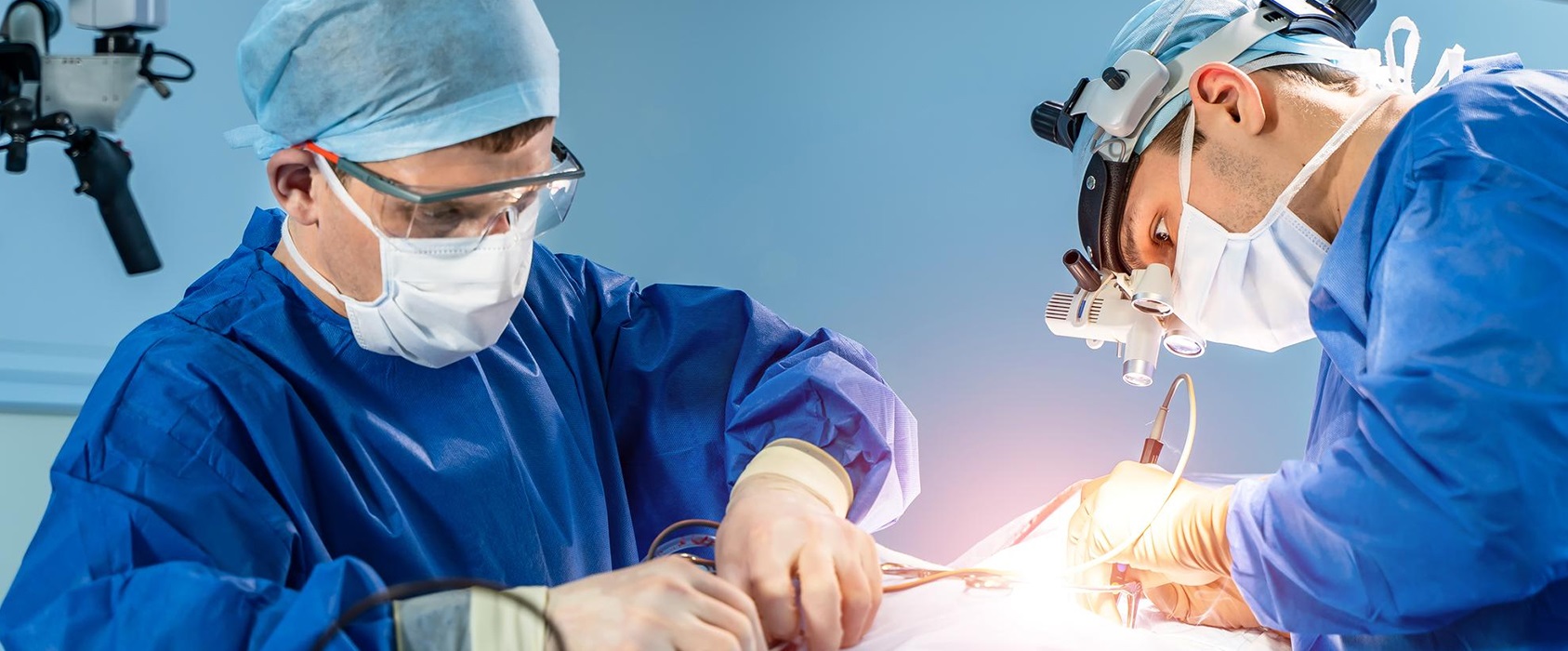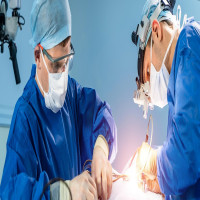How Robotic Liver Surgery is Revolutionizing Liver Transplantation: Key Advances and Benefits.

Strong 8k brings an ultra-HD IPTV experience to your living room and your pocket.
The human liver is a remarkable organ with over 500 essential functions, playing a crucial role in maintaining overall health. It filters toxins, produces vital proteins, regulates blood sugar, and supports digestion, making it indispensable to human physiology. However, liver disease caused by genetic factors, viral infections, alcohol abuse, or other conditions can have serious, life-threatening consequences.
In severe cases, liver transplantation becomes the only effective treatment. Over time, this procedure has evolved from a high-risk operation to a life-saving intervention with impressive success rates. A key breakthrough in this field has been the adoption of robotic liver surgery, which has significantly improved the precision and success of the procedure.
At MH Robotic Surgery Clinic— The Best robotic surgery hospital in India for high-precision robotic liver donor surgeries—we will delve into the essential aspects of liver transplantation. This includes exploring the different types of transplantation, the benefits of robotic liver surgery, the procedure itself, the recovery process, and important do’s and don’ts, among other vital details.
Understanding the Types of Liver Transplants
Liver transplants can be divided into two primary types:
1. Deceased Donor Liver Transplant: This type involves receiving a liver from a donor who has passed away, often due to brain death caused by a traumatic injury or other factors.
2. Living Donor Liver Transplant: In this case, a healthy individual donates a part of their liver to a recipient. The liver's remarkable regenerative capacity allows both the donor’s and recipient’s livers to regenerate and return to nearly their original size within a few months post-surgery.
What are the Benefits of Robotic Surgery in Liver Transplantation?
Robotic surgery in liver transplantation, particularly when it involves removing a portion of the liver from a live donor, offers several advantages over traditional open surgery and standard laparoscopic techniques. These benefits are equally relevant for liver cancer operations or robotic cancer surgery. Here are some key benefits:
Improved Accuracy and Control:
The robotic system enhances the surgeon's dexterity and precision, ensuring more accurate dissection and reconstruction, particularly in complex procedures like liver cancer operation.
Less Invasive Procedure:
Robotic liver transplants and robotic cancer surgeries are performed through smaller incisions, leading to less trauma, reduced pain, and smaller scars for better patient satisfaction.
Minimized Blood Loss:
The precision of robotic tools helps minimize blood loss, which is crucial during liver transplants and liver cancer surgeries, contributing to fewer complications and a smoother recovery.
Quicker Recovery and Shorter Hospital Stay:
Patients undergoing robotic liver or cancer surgeries typically have shorter hospital stays and faster recovery times, enabling them to return to normal activities sooner.
Faster Healing and Less Pain:
Smaller incisions and reduced pain after surgery result in quicker recovery, allowing patients to resume daily activities and responsibilities more rapidly.
Reduced Risk of Complications:
The minimally invasive nature of robotic surgery lowers the risk of infection and other complications typically associated with larger incisions, improving overall safety and outcomes.
Enhanced Surgical Visualization:
Robotic systems provide high-definition, 3D views of the surgical area, helping surgeons assess and navigate the liver and surrounding structures more effectively during transplants or cancer surgeries.
Customized Surgical Approach:
Robotic surgery allows for a tailored approach based on the patient's specific anatomy, enhancing the chances of a successful outcome and reducing the likelihood of complications.
A Comprehensive Guide to How Transplant Surgeries Are Conducted
Liver transplantation is a highly complex procedure that combines advanced robotic technology with expert surgical skills to replace a diseased liver with a healthy one. The process involves several crucial stages to ensure its success. Here’s a simplified breakdown of how a robotic liver transplant is performed at Amrita Hospital:
Pre-Surgical Evaluation:
Before surgery, the patient undergoes thorough assessments, including imaging and blood tests, to confirm their suitability for the procedure. If the transplant involves a living donor, they are also evaluated for compatibility and overall health.
Surgical Planning:
The surgical team uses advanced imaging techniques to carefully plan the procedure. Virtual simulations create 3D models, providing a clear understanding of the surgical site to ensure accuracy during the operation.
Preparation of the Live Donor in the Operating Room:
On the day of surgery, the patient is given anaesthesia, and the robotic surgical system, including a console and robotic arms, is set up. The surgical team prepares the robotic instruments, ensuring they are sterile and functioning properly.
Making Incisions:
With the assistance of the robotic arms, the surgeon makes several small incisions in the recipient's abdomen to insert the robotic instruments and cameras. The robotic arms hold specialized tools that help perform the surgery with precision.
Liver Harvesting:
Using keyhole incisions, the surgeon divides the liver with the robotic arms. The portion of the liver to be transplanted typically weighs 400 to 500 grams and requires an additional 10-13 cm incision, usually along the bikini line, which fades within a few days.
Preparing the Recipient:
For a deceased donor transplant, the surgeon prepares the recipient’s abdomen to remove the damaged liver. This involves carefully separating surrounding tissues and blood vessels while minimizing trauma.
Implanting the Donor Liver:
Once the diseased liver is removed, the healthy liver from the donor is positioned within the abdominal cavity. The surgeon connects the donor liver to the recipient’s blood vessels and bile ducts, ensuring proper blood flow and bile drainage.
Postoperative Monitoring:
Following the successful surgery, the patient is moved to an observation area to recover from anaesthesia. Their vital signs, fluid balance, and liver function are closely monitored to confirm that the transplant is working effectively.
The entire procedure typically lasts between 6 to 12 hours, depending on the complexity. Once the patient’s vital signs stabilize, they are transferred to the ward, where they receive pain management, nutritional support, and rehabilitation to regain strength and mobility. The length of hospital stay depends on the patient's recovery progress.
Do’s and Don’ts After Liver Transplantation
After undergoing robotic liver transplant surgery, it’s essential to follow specific guidelines for proper healing and to prevent complications. Here are the key do's and don’ts to ensure a successful recovery:
Do’s:
- Follow the medication schedule strictly as prescribed by your liver transplant hospital in India.
- Eat a balanced, liver-friendly diet to support recovery and liver function.
- Stay hydrated to maintain proper organ function.
- Maintain a healthy lifestyle with regular, gentle exercise to improve your overall health.
- Attend regular follow-up appointments to monitor progress and detect any issues early.
- Monitor your weight and report any rapid changes to your healthcare provider.
Don’ts:
- Don’t skip medications to avoid rejection of the transplanted liver.
- Avoid alcohol and drugs, as they can damage the liver or interfere with medications.
- Avoid eating raw or undercooked foods to reduce the risk of infection.
- Don’t lift heavy objects to prevent strain on the abdominal area.
- Don’t expose yourself to extreme temperatures which could stress your body.
- Avoid smoking as it impairs healing and increases the risk of complications.
- Don’t ignore symptoms, such as fever or fatigue—seek medical help immediately.
- Avoid exposure to people with infections since immunosuppressants taken after the transplant lower immunity.
The Future of Robotic Hepatectomy
Robotic liver surgery is rapidly advancing, and the future of robotic liver transplant surgery holds great promise. As one of the best robotic surgery hospitals in India, Amrita Hospital, located in Kerala, is at the forefront of research and development in this field, contributing to breakthroughs in robotic liver surgery.
With ongoing advancements in robotic technology, we expect the robotic systems to further enhance the precision of surgical instruments. Improved dexterity and a greater range of motion will enable surgeons to perform complex liver cancer operations and liver resections with higher accuracy. This will minimize damage to surrounding tissues and reduce recovery times for patients undergoing liver transplant in Bangalore or other regions.
Incorporating AI into robotic surgery in India will assist surgeons in every phase of surgery, from pre-operative planning to real-time adjustments during the procedure. This will improve decision-making and ensure that optimal surgical techniques are followed.
Additionally, the integration of augmented reality and 3D imaging technologies will allow surgeons to visualize complex anatomical structures during the procedure, providing greater accuracy, especially for liver transplants and robotic liver surgery procedures.
Looking ahead, the focus will be on minimally invasive techniques, promising reduced post-operative pain and quicker recovery for patients. With the growing adoption of robotic surgery in Bangalore and across the country, there will be a greater emphasis on training robotics surgeon. Simulators and virtual reality platforms will become essential in surgical education, allowing trainees to practice intricate procedures in a safe, controlled environment before they operate on real patients.
Ultimately, robotic liver transplant surgery and its advancements aim to enhance the overall patient experience, focusing on delivering the best outcomes with reduced recovery time, fewer complications, and a better quality of life post-surgery.
Experience a New Era in Liver Transplantation with Robotics at MH Robotic Surgery Clinic
Representing a significant leap forward in the field of organ transplantation, robotic hepatectomy offers numerous advantages, including enhanced precision, reduced recovery time, and improved outcomes. With the potential for faster recovery, less pain, and reduced risks, robotic liver transplantation has set a new standard for organ transplants, paving the way for a healthier future.
As a pioneer in this technology, MH Robotic Surgery Clinic, under the expert guidance of Dr. Manjunath Haridas, is committed to offering world-class care to our patients. As we continue to push the boundaries of what's possible in transplant surgery, we remain dedicated to our core mission of providing compassionate and advanced care to those in need of life-saving liver transplants.
Book your appointment now and take your first step towards a healthier future!
Note: IndiBlogHub features both user-submitted and editorial content. We do not verify third-party contributions. Read our Disclaimer and Privacy Policyfor details.


